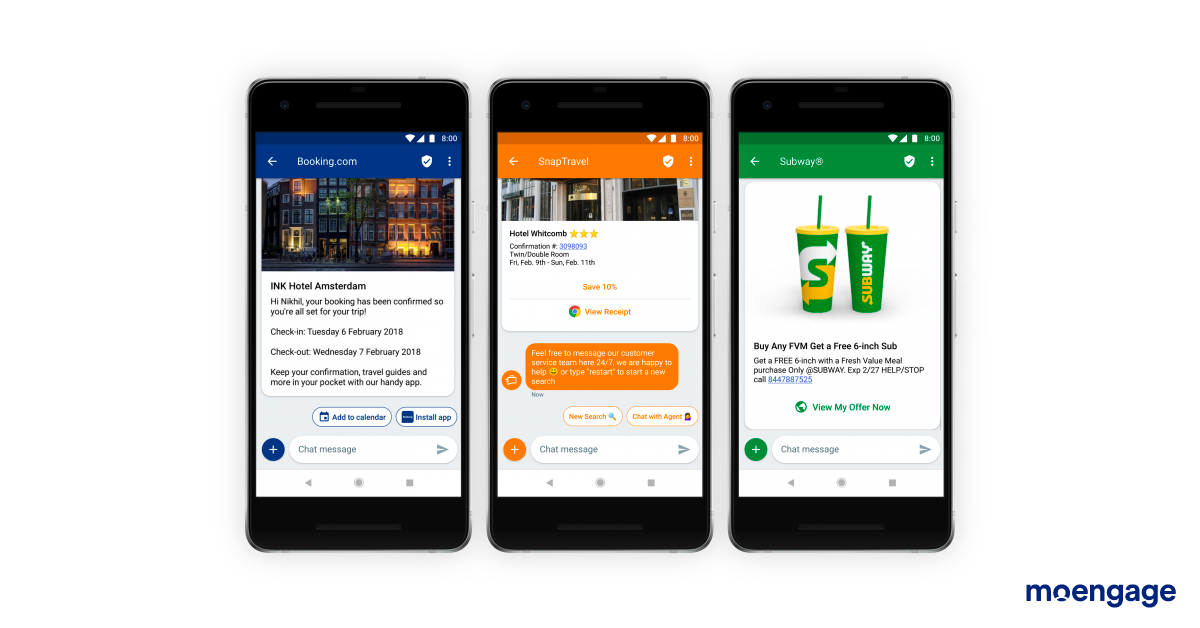Should Consumer Brands Invest in RCS Messaging to Engage Customers?
RCS (Rich Communication Services) Messaging combines the features of messaging apps like WhatsApp and Facebook Messenger to the ubiquity of SMS.
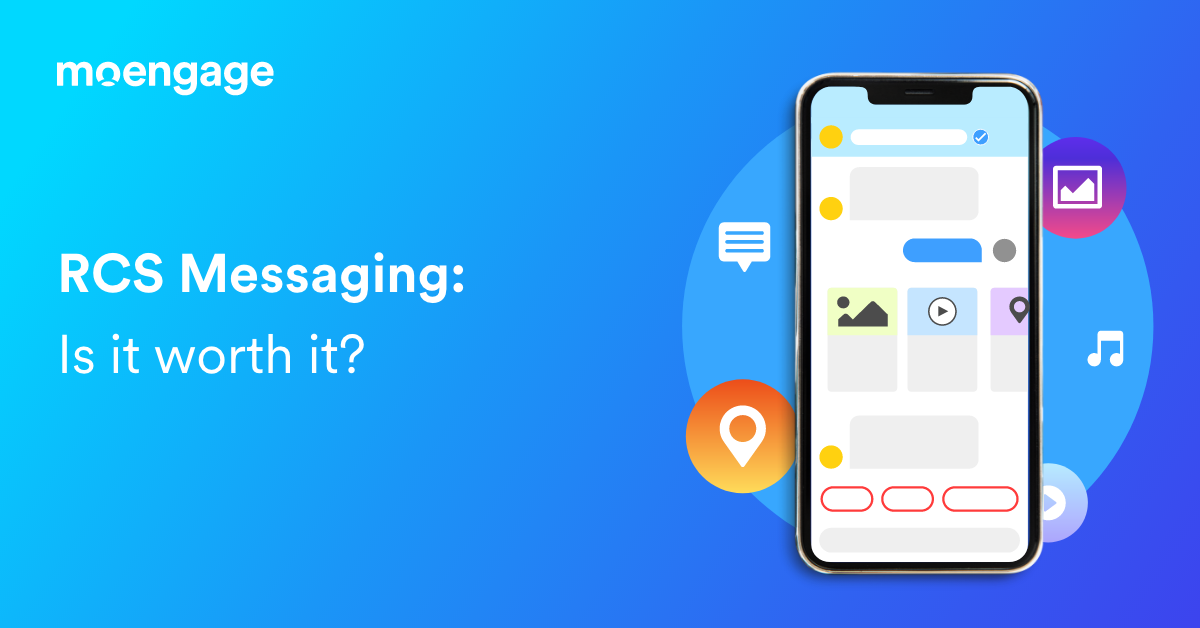
Reading Time: 10 minutes
In the Winter of 1992, Neil Papworth used his personal computer to send the first-ever SMS to Richard Jarvis of Vodafone. The text read “Merry Christmas”. Since then, SMS has evolved into the primary communication channel for global businesses to engage their customers. RCS Messaging is the next step in the SMS evolutionary chain.
Table of Content
- What is RCS Messaging?
- RCS for Businesses
- RCS statistics and trends, 2022
- How to use RCS messaging to boost Customer Engagement?
- Conclusion
What is RCS Messaging?RCS (Rich Communications Services) Messaging is a next-generation messaging protocol aimed to replace SMS with a richer text system. This standard combines the messaging features of popular messaging apps like WhatsApp and Facebook Messenger delivered via the default SMS messaging app like Google Messages and Samsung Messages. RCS is also known as Advanced Messaging, Joyn, SMSoIP, Message+, and SMS+. |
RCS for Businesses
Businesses have adopted RCS to improve Customer Engagement thanks to interactive features that introduce new use cases to the standard SMS channel. With RCS Business Messaging (RBM), brands can engage their customers better by sharing high-resolution photos and videos, making it easier to add appointments to a calendar, mapping directions to physical outlets, sharing a carousel of products, and more!
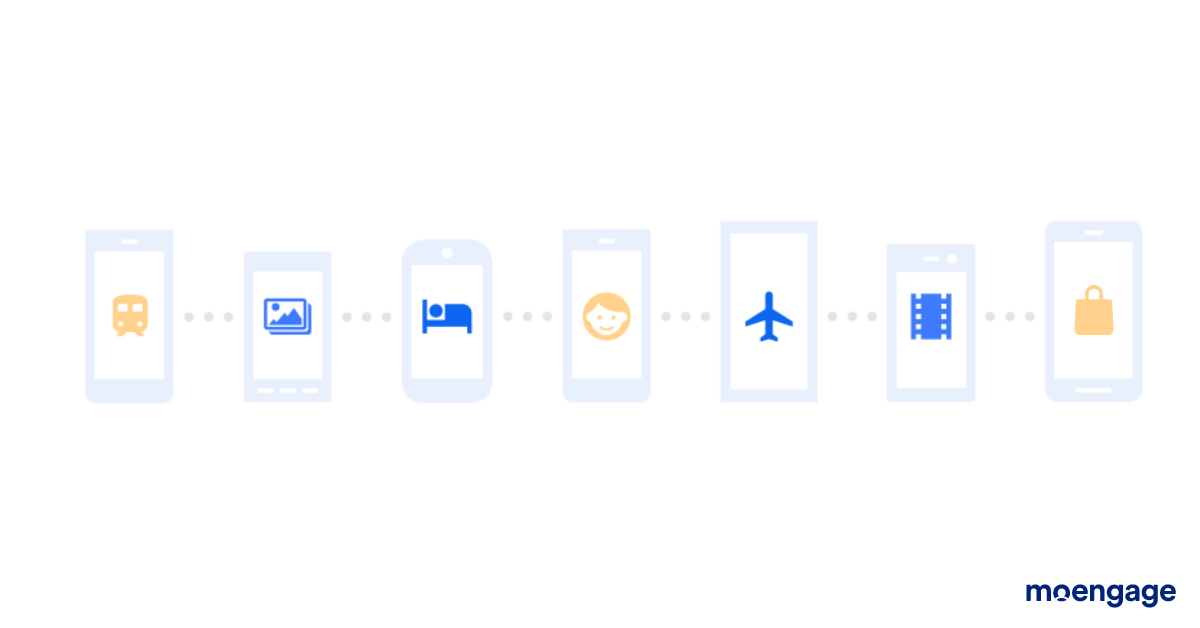
RCS statistics and trends, 2022
With the advent of 5G, the global demand for RCS is expected to see exponential growth owing to reduced latency, data, and delivery issues of media content. Various telecom operators are also expected to offer RCS as part of their 5G services over the coming years.
Here are a few stats of RCS Messaging sourced from Wikipedia, GSMA, and MordorIntelligence:
- Over 90% of SMS users remain active after 90 days, suggesting huge potential for RCS as a channel for Customer Engagement;
- Used by over 157 million active users globally;
- Implemented by over 22 handset manufacturers;
- Support announced by 55 carrier networks so far;
- 491 networks with 2.5 billion users are expected to adopt RCS in 2022, of which 58% will be based in the Asia Pacific;
- In May 2018, NTT DoCoMo, KDDI, and Softbank launched RCS Messaging as ‘+Message’ service in Japan;
- Redbox leveraged RCS at Google’s Innovation City Booth at Mobile World Congress Americas in 2018;
- In November 2019, Google rolled out RCS support to Android phones across the United States;
- Google rolled out RCS in the United Kingdom and France in November 2019;
- In 2020, four major carriers, AT&T, Verizon, Sprint, and T-Mobile, joined forces to deliver RCS Messaging for Android smartphones;
Here are the top RCS Messaging trends for 2022:
1. Banking and Financial Services will witness the highest growth in RCS adoption
RCS can improve Customer Engagement in neobanks and traditional banks with a digital presence to a great extent.
Marketers can include a horizontally scrollable carousel of up to 10 vertical rich cards, branch locator, suggestive replies, and much more. Marketers can also leverage read recipients, delivery receipts, on-screen event capturing, and customized information of customers on the basis of their responses to a message. This will help Marketers collect richer insights into your customer’s preferences and behavior.
The most important feature of RCS Business Messaging which makes this technology well suited for banks is deep-linking for web-based campaigns and/or emails.
2. APAC will see the largest growth in RCS market share, closely followed by NA and EU
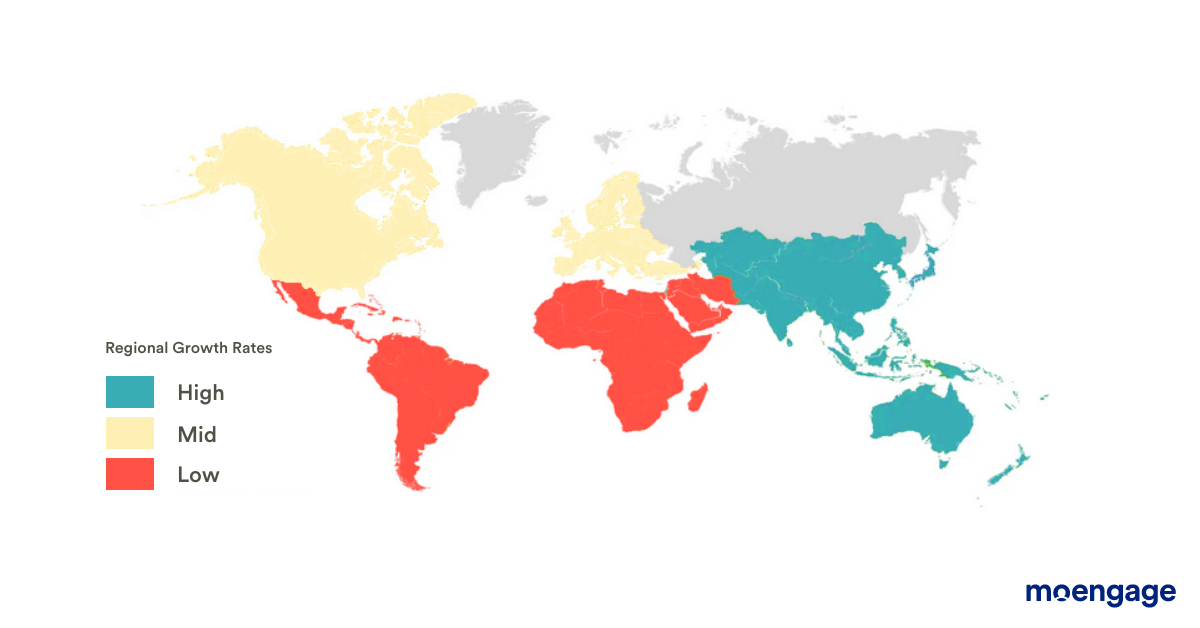
Currently, a large share of active RCS customers is limited to where operators are offering the service. This includes the United States, Japan, South Korea, and Germany. Mexico, the United Kingdom, and France are also at the forefront due to an ongoing effort by Google in these regions.
However, these demographics are expected to change rapidly with strong 5G support over the coming years.
Given that only two mobile operators, Google and Microsoft, support Rich Communication Services, the Asia-Pacific region is predicted to hold the largest market share for RCS.
In North America, RCS is gaining traction as the default engagement channel. According to CTIA, in 2019, about 99.7% of the US population lived in areas covered by 4G LTE. And, as per Ericsson, the number of smartphone subscriptions in the US is expected to reach 360 million by 2025. VoLTE is used here to share the IP Multimedia Subsystem (IMS) stack and enhance the efficiency of the devices and network, and simplify the deployment of RCS services. Also, about 74% of North American mobile subscriptions are expected to be for 5G in 2025.
3. Telecom operators and OEMs are prepared for RCS Messaging
According to GSMA, the top carriers from around the globe support the RCS standard. This includes AT&T, Bell Mobility, Bharti Airtel, Deutsche Telekom, Jio, KPN, KT Corporation, Telecom Italia, Telefónica, Verizon, Vodafone, and many others.
| What is RCS Universal Profile?
Universal Profile is a single set of features and technical enablers that are developed to simplify product development and global deployment of RCS. This industry standard contains core features such as capability discovery, group chat, file transfer, audio messaging, video share, location share, and more. As per GSMA, Universal Profile is currently backed by a growing ecosystem of 68 supporters so far! You can also subscribe to the r/universalprofile sub-reddit to learn more. |
RCS Messaging is supported by 55 operators, including AT&T Mobility, Axiata, Bell Mobility, Bharti Airtel, China Telecom, Deutsche Telekom, Jio, KDDI, MTS, NTT Docomo, Sprint Corporation, T-Mobile US, Turkcell, Verizon Communications, Vodafone, and more.
11 OEMs including Asus, HTC, Huawei, Lenovo (Motorola), Samsung, and ZTE, and 2 mobile OS providers, Google and Microsoft, also support RCS Messaging.
4. RCS partnerships will increase exponentially
Consumer brands and businesses are partnering with tech companies such as MoEngage for technological capabilities and innovation.
In March 2019, HDFC Bank Limited, India’s largest private sector bank, partnered with Route Mobile Limited to showcase RCS on Google’s RCS Business Messaging platform at the Mobile World Congress (MWC).
In May 2020, Mavenir announced its Mobile Business Messaging Cloud in Europe with RCS interconnection with the networks of Telefónica (BME:TEF), Vodafone (OTCMKTS: VODPF), and Deutsche Telekom Germany.
Going forward, as more consumer brands across the globe adopt RCS, the number of partnerships between Customer Engagement platforms and consumer businesses will increase, leading to more innovations in the ecosystem.
How to use RCS messaging to boost Customer Engagement?
With SMS seeing 3X higher usage than Facebook, consumers expect brands to send them personalized recommendations, transactional alerts, sales offers, and more via this communication channel.
Here are a few ways consumer brands currently use RCS messaging to improve their North Star metrics:
1. Rich media promotions by Subway
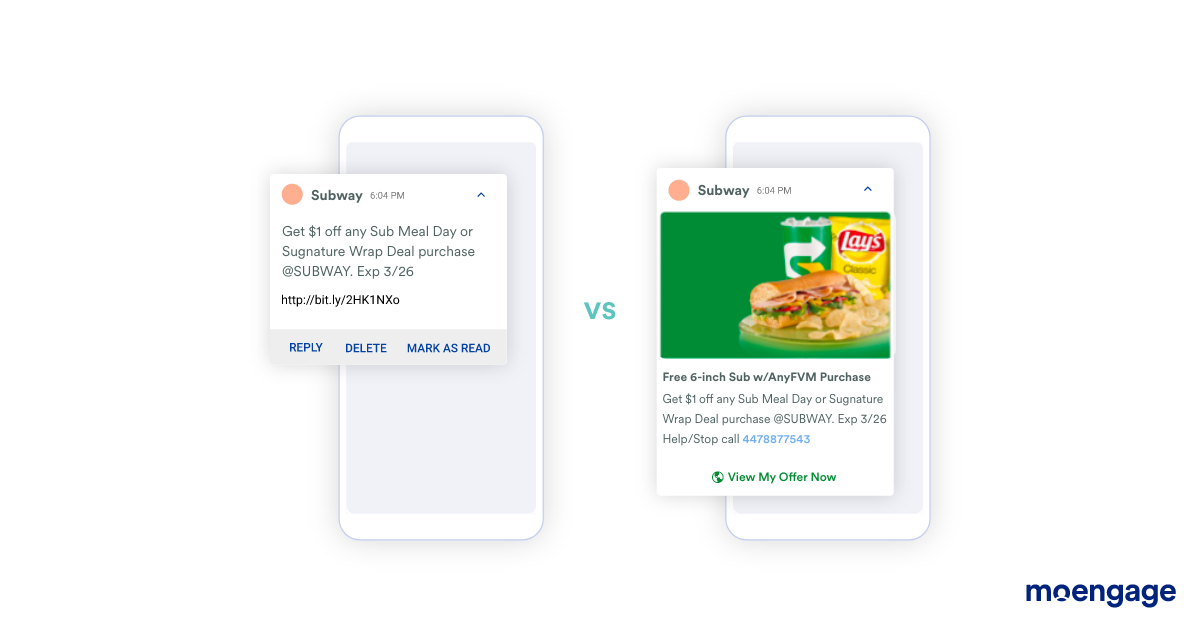
As you’re already aware, using images in promotional communication lifts conversion rates. But adding images to SMS Marketing campaigns was a challenge for the Subway team, which was solved by switching to RCS Messaging.
Subway ran A/B tests to compare the performance of SMS versus RCS. They created two customer groups who received the same offer but via different channels – SMS and RCS. The text was an exact match on both channels, however, the RCS version included the Subway brand image, product images, and interactive buttons.
The result? Conversion rates were 140% higher for the RCS promotion than for the SMS promotion! You can read the detailed story of Subway’s success with RCS here.
How can MoEngage help?The key to getting high conversion rates from rich media promotions using RCS Messaging lies in effective segmentation. Let’s say Subway is running promotional offers on the Steak & Cheese Sub on their menu.
|
2. Onboarding and profile completion by Fintonic
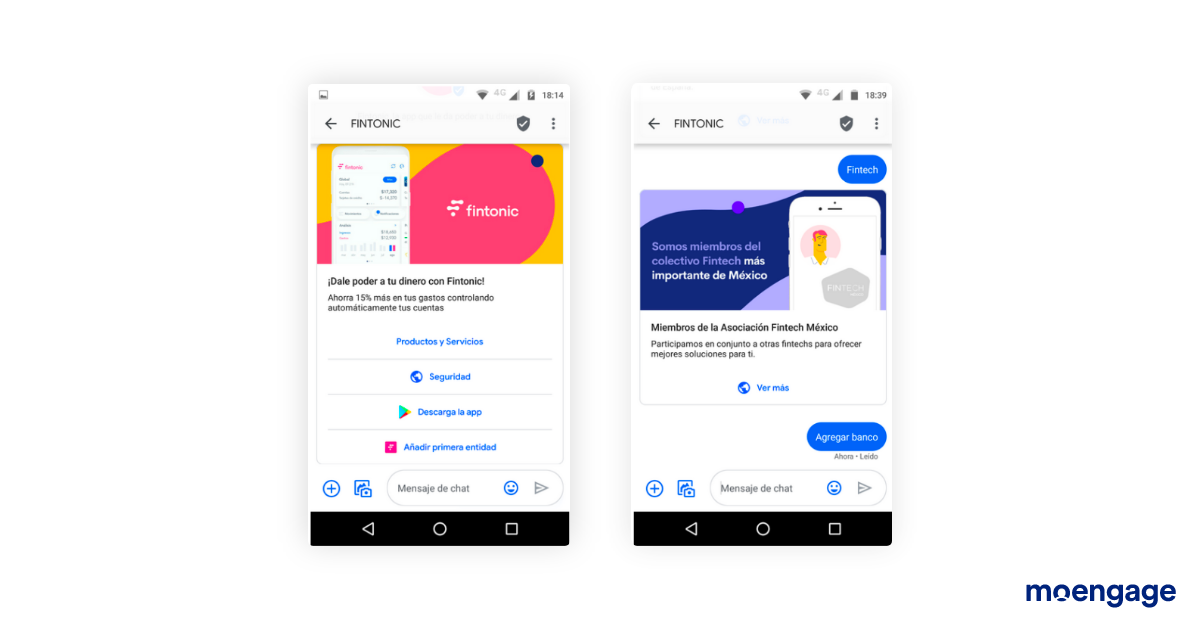
Fintonic, a Spanish Fintech company, faced a challenge that is common in the Fintech vertical – convincing new customers to complete their profile by linking their bank accounts during onboarding. RCS Messaging helped educate the customers about the safety of linking their bank accounts via rich content like videos and images.
The consumer brand launched two RCS campaigns. The first campaign consisted of customers who had downloaded and registered for the app but did not use it the same day. The other campaign was sent to existing customers who hadn’t linked their bank accounts. Both campaigns had similar information and resources meant to educate their customers.
Fintonic then compared RCS Messaging campaigns with SMS, push notification, and email campaigns over a period of 4 months. The comparison showed that Fintonic customers who received educative content via RCS linked their bank accounts to their profile 3X more times than customers who received the same content via email and push notifications! Check out the detailed success story of Fintonic here.
How can MoEngage help?Building an effective onboarding journey has proven to elevate engagement and retention metrics exponentially. Let’s say the conversion goal for a successful onboarding for your brand is the action of linking a customer’s bank account.
|
3. Personalized recommendations and BOPIS by Best Buy
As customer-centric retailers strive to tap innovative technologies to boost customer experience, drive customer loyalty, and beat the competition, Best Buy is leading from the front. The American electronics retailer adopted RCS Messaging to improve their buy-online-pickup-in-store (BOPIS) experience to become more personalized and frictionless.
In the video above, you can see a simulation of the BOPIS experience by a fictitious customer, Jane, who has just placed an online order for a 55″ television. This purchase information, combined with Jane’s loyalty rewards data, is used to display an interactive section of personalized product recommendations such as a protection plan, a wall mount, and HDMI cables.
Without typing in, Jane is successfully able to select a 2-year protection plan that can be added to her order. After confirmation, Jane can also decide the mode of payment from a set of options like her card on file or an in-person payment at the store during the pickup.
After the purchase is done, Jane can view the invoice of her transaction and get the location of the nearest Best Buy store from where she can pick up the television – all from her default SMS mobile app, thanks to RCS Messaging.
How can MoEngage help?As per our recent Personalization Pulse Check Report, 27% of consumers indicated that they are most frustrated when they receive irrelevant product recommendations from brands. But, delivering personalized recommendations at scale is not easy, especially when you’re engaging with millions of customers with billions of preferences. Each customer is unique and has different needs and ways of engaging with your brand. Taking the same example as above, this is how consumer brands can deliver personalized recommendations to their customers:
|
4. Real-time updates for sporting events by Orange
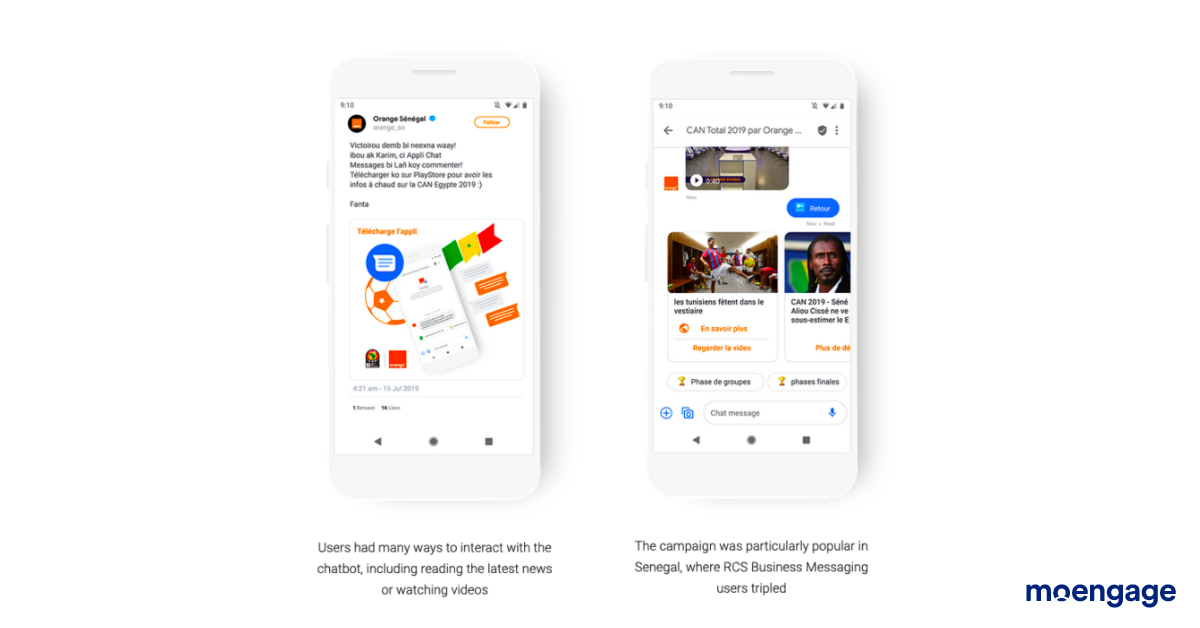
On the first day of the 2019 Africa Cup of Nations football tournament, the telecommunication giant, Orange, launched the world’s first multi-country RCS Messaging bot.
The RCS Messaging bot allowed customers to access information on the latest scores and table standings, team updates, player profiles, and upcoming matches at the tap of a button. Orange also enabled its customers to get real-time game notifications, read new articles, and watch videos via the bot.
Orange doubled their active RCS Messaging customers during the tournament. Overall, more than one million messages were sent by the bot during the month-long tournament, with 33% of customers interacting 25 times per conversation on average, something that wouldn’t be possible via SMS Marketing! You can read the detailed story here.
Conclusion
TL;DR: Yes, RCS Messaging is worth it!
This next-gen communication channel combines the messaging features of popular messaging apps like WhatsApp and Facebook Messenger such as rich media delivery, interactivity, and bots to the standard SMS channel available today.
As Telecom operators and OEMs prepare for RCS Messaging, the Asia Pacific region is predicted to have the highest adoption, closely followed by North America and Europe. Consumer brands from all over the globe are partnering up with tech companies to equip themselves with RCS Business Messaging and boost their Customer Engagement efforts.
Brands like Subway, Fintonic, Best Buy, Orange, and many others, are using RCS Messaging to send personalized recommendations, create a frictionless BOPIS experience, send real-time updates of sporting events, and improve customer onboarding.
